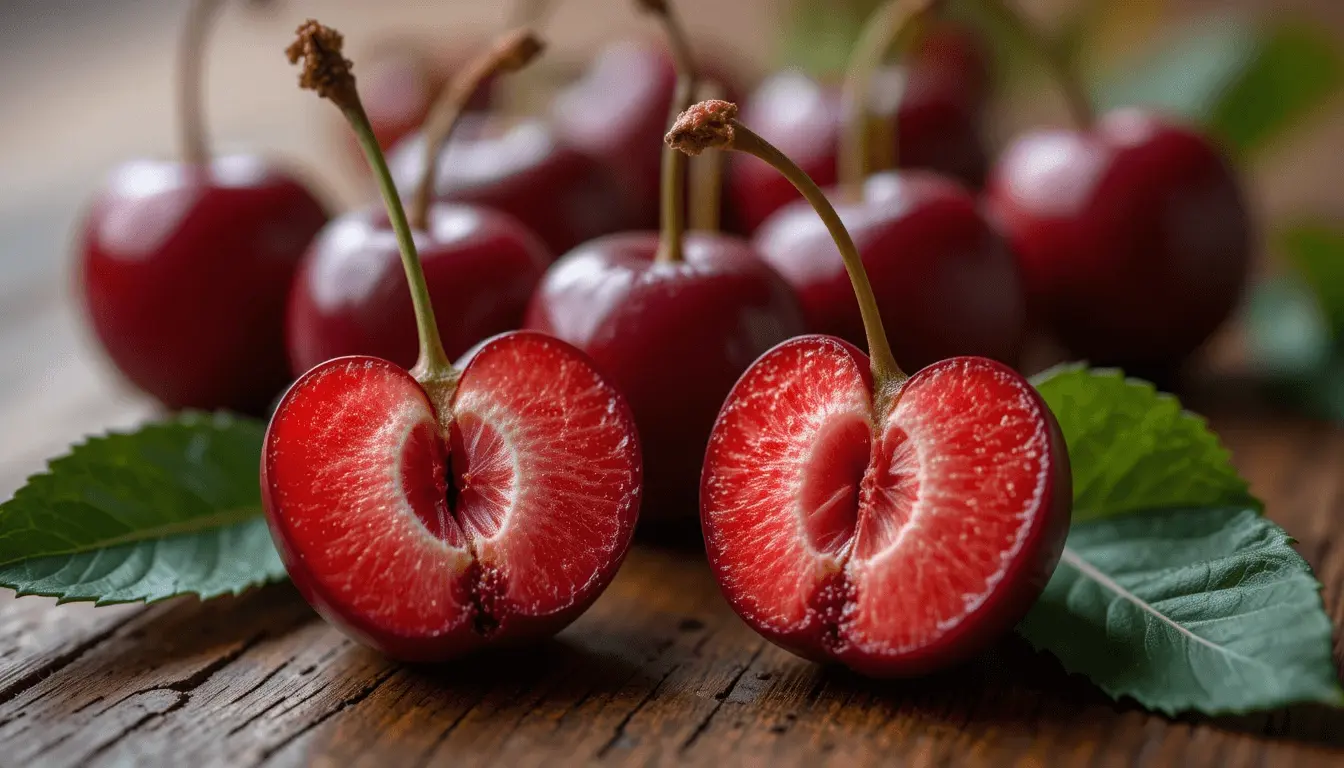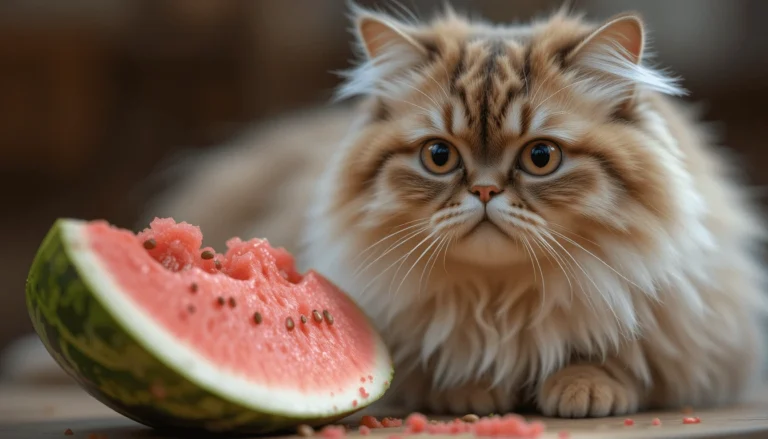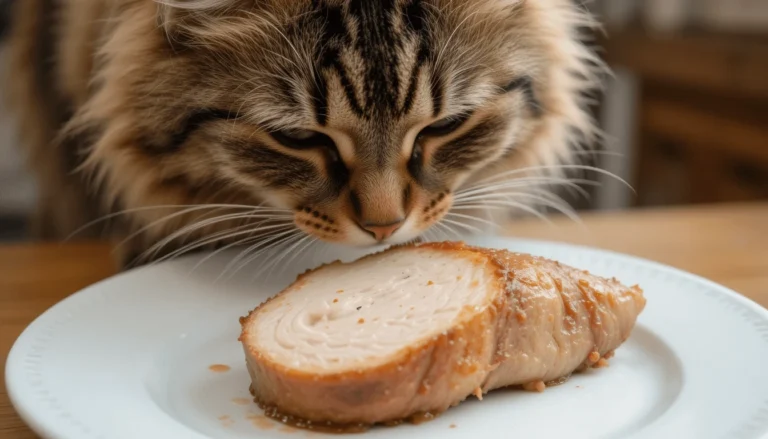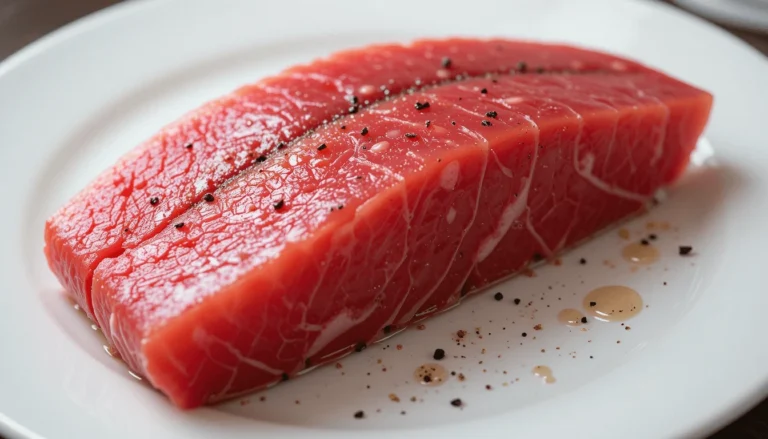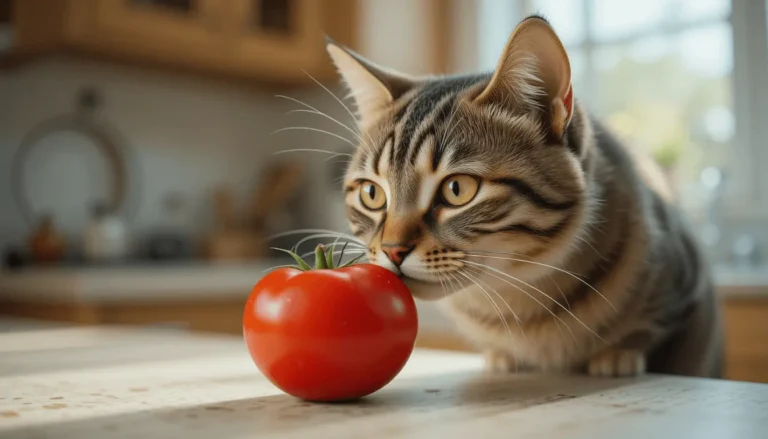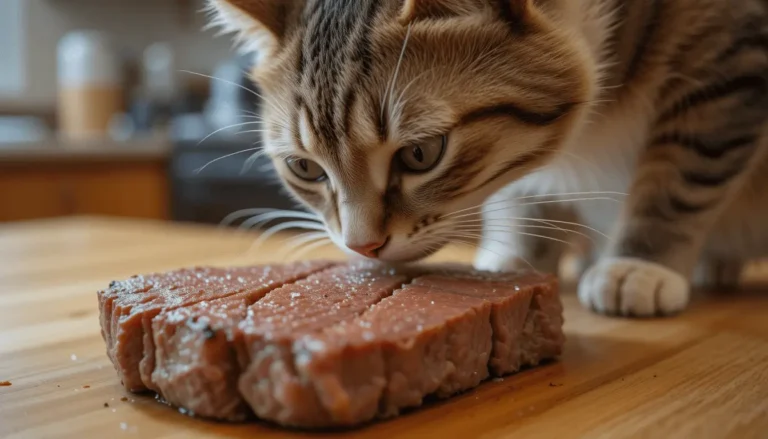Can Cats Eat Cherries? A Complete Guide for Pet Owners
Introduction
The curious cat perched on the kitchen counter, eyes locked on the bowl of fresh cherries you just washed. As you pop one into your mouth, your feline friend tilts its head—those big, pleading eyes silently asking, “Can cats eat cherries too?” Before you surrender to the temptation of sharing, pause. That innocent cherry could hide a dangerous secret for your pet.
Can cats eat cherries? The short answer is no—and here’s why. While the fleshy part of cherries may appear harmless, their pits, stems and leaves naturally contain amygdalin – a compound that metabolizes into cyanide when ingested. This presents a significant toxicological hazard for felines. Even the flesh, while less deadly, can upset your cat’s delicate digestive system with excess sugar and acids. But what happens if your sneaky whiskered thief already took a bite? And which fruits are safe for them?
In this guide, we’ll untangle the myths, reveal veterinary-backed truths, and help you protect your cat—because their safety starts with what you don’t feed them. Let’s dive in.

Are Cherries Safe for Cats? Understanding the Risks
As a devoted cat lover, you’d never want to put your feline friend in harm’s way. Those pleading eyes watching you eat cherries might melt your heart, but before you share, you need to know: can cats eat cherries?The reality is, cherries can be dangerously toxic to cats.
The Cyanide Threat in Cherry Pits and Stems
Cherries contain amygdalin, a compound that converts to cyanide when ingested. While the fleshy fruit itself has low toxicity, the real danger lies in the pits, stems, and leaves. The ASPCA lists cherries as toxic to pets due to this cyanide risk.
Veterinary case reports show that even one or two chewed cherry pits can release enough cyanide to cause poisoning. While cats are generally more cautious eaters than dogs, their curiosity can still get them into trouble – especially with enticing-smelling fruits.
Recognizing Cherry Poisoning Symptoms
If your cat has ingested cherry pits or stems, watch for these emergency signs:
- Bright red gums (a classic cyanide poisoning symptom)
- Difficulty breathing or panting
- Dilated pupils
- Vomiting or diarrhea
- Sudden weakness or collapse
The Pet Poison Helpline notes that symptoms can appear within 15-20 minutes of ingestion. If you see any warning signs, contact your vet immediately or call the ASPCA Animal Poison Control at (888) 426-4435.

What About Just the Cherry Flesh?
While the fruit meat isn’t directly toxic, it’s still problematic:
- High sugar content can cause digestive upset
- The acidity may irritate your cat’s stomach
- Sticky residue can lead to choking or grooming hazards
The Cornell Feline Health Center advises that cats have no nutritional need for fruits, and the risks outweigh any potential benefits.
Keeping Your Cat Safe
To protect your curious feline:
- Always dispose of cherry pits and stems securely
- Wash your hands after handling cherries
- Consider pet-safe alternatives like blueberries or watermelon (seedless)
To be clear: cats should never eat cherries under any circumstances. Your cat’s health isn’t worth the risk. In our next section, we’ll explore delicious, vet-approved alternatives that will keep your feline both safe and satisfied.
Cat-Friendly Fruits: Safe and Healthy Alternatives to Cherries
While cherries are off the menu, there are plenty of safe, vet-approved fruits that can add variety to your cat’s diet. Unlike cherries, these options provide nutritional benefits without the risks of cyanide poisoning.
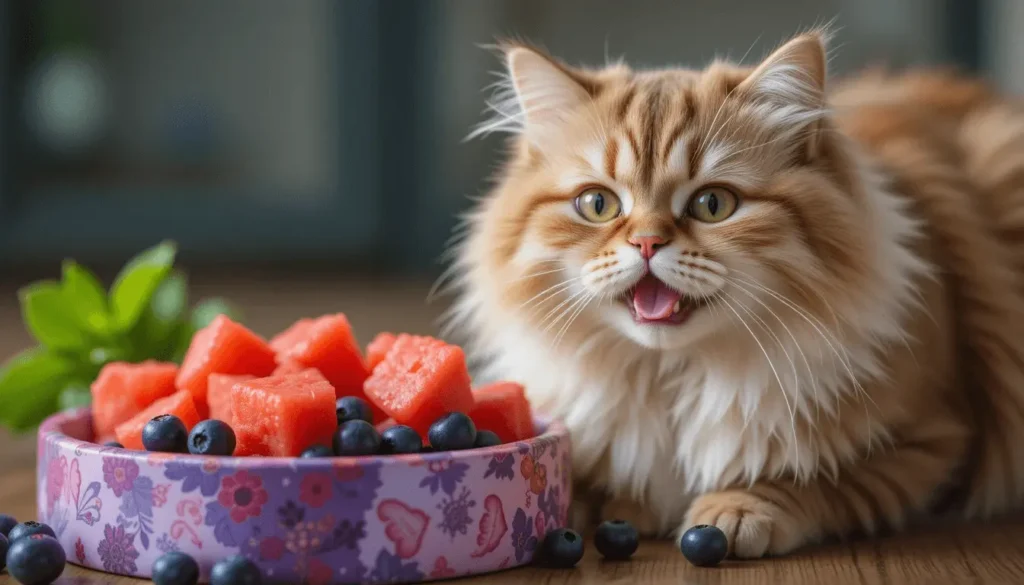
Best Fruits for Cats (Veterinarian-Recommended)
- Blueberries – Packed with antioxidants and fiber, these tiny superfruits are perfectly sized for feline nibbles. The ASPCA confirms blueberries are non-toxic and may support urinary tract health.
- Seedless Watermelon – A hydrating summer treat (remove rind and seeds first). The high water content helps with hydration, especially for cats who don’t drink enough.
- Bananas (in moderation) – Offer small pieces as an occasional treat. While high in potassium, their sugar content means they should be limited to rare indulgences.
Nutritional Benefits of Safe Fruits
Unlike cherries, these cat-friendly options provide:
- Added hydration from high water content fruits like watermelon
- Dietary fiber to aid digestion (especially helpful for constipated cats)
- Natural vitamins like vitamin C (blueberries) and potassium (bananas)
The Cornell Feline Health Center notes that while cats are obligate carnivores, small amounts of these fruits can be safe supplements when introduced properly.
How to Safely Introduce New Fruits
- Start tiny – Offer a piece no larger than your pinky nail
- Monitor closely for 24 hours for any digestive upset
- Remove skins/seeds which can pose choking hazards
- Limit frequency – Treats should never exceed 10% of daily calories
Pro Tip: Smash blueberries or freeze tiny watermelon cubes for a refreshing summer snack!
Keeping Your Cat Safe: Prevention and Emergency Response
Even with safer alternatives available, curious cats may still find ways to get into dangerous foods. Here’s how to cherry-proof your home and respond to emergencies.
Preventing Cherry Ingestion
- Secure Storage – Keep cherries in closed containers or high cabinets
- Immediate Cleanup – Dispose of pits/stems in a lidded trash can
- Educate Family – Ensure everyone knows cherries are off-limits for cats
- Garden Safety – Remove cherry trees or restrict outdoor access during fruiting season
The Pet Poison Helpline reports that most fruit poisonings occur when pets access trash or countertops.
Emergency Response Plan
If exposure occurs:
- Remove remaining cherry parts from your cat’s mouth
- Note quantity ingested – Even one pit is dangerous
- Call your vet or poison control – Have the cherry type (sweet vs tart) ready
- Watch for symptoms – Time is critical with cyanide exposure
When to Rush to the Vet
Seek immediate care if you notice:
- Bright red gums or tongue
- Difficulty breathing
- Sudden collapse
- Seizures
The ASPCA Animal Poison Control maintains a 24/7 hotline for these emergencies.
Closing Thought:
While we’ve focused on cherries, remember that grapes and raisins are even more toxic to cats. When in doubt, stick to vet-approved treats and always err on the side of caution with your feline’s diet.
Conclusion: Keeping Your Feline Friend Safe and Happy
While cherries may be a delicious summer treat for humans, the answer to “Can cats eat cherries?” is a firm no—the risks simply aren’t worth it. From cyanide in pits and stems to digestive upset from the fruit itself, cherries have no place in your cat’s diet.
But that doesn’t mean your curious kitty has to miss out on tasty snacks! Cat-safe fruits like blueberries, seedless watermelon, and bananas (in moderation) can add variety without the danger.
As responsible pet owners, our priority is keeping our cats safe, healthy, and happy. By understanding toxic foods, securing risky items, and knowing emergency steps, you’re already giving your feline the best care possible.
So next time you enjoy cherries, you’ll know exactly why they’re off-limits for your cat—and what better treats you can offer instead.
Final Thought:
Your cat’s health is priceless, and every small precaution makes a difference. After all, wouldn’t you do anything to protect those precious purrs?
FAQs
1. Can cats eat cherries without the pits
No, even cherry flesh can cause stomach upset due to its high sugar and acid content. While the flesh isn’t as toxic as the pits, it’s still not safe for cats. Stick to vet-approved fruits like blueberries or watermelon instead.
2. What should I do if my cat accidentally eats a cherry?
First, stay calm. Remove any remaining cherry pieces from your cat’s mouth. Then, call your vet or the ASPCA Animal Poison Control Center (888-426-4435) immediately—even a small amount can be dangerous. Watch for symptoms like vomiting, difficulty breathing, or lethargy.
3. Are dried cherries or cherry-flavored foods safe for cats?
No. Dried cherries are concentrated in sugar and may still contain traces of pits. Cherry-flavored products (like yogurt or candy) often contain artificial sweeteners like xylitol, which is extremely toxic to cats. Always avoid sharing human foods unless they’re confirmed safe by a vet.
4. Why are cherry pits so dangerous for cats?
Cherry pits contain amygdalin, which converts to cyanide when chewed or digested. Cyanide prevents oxygen absorption in the blood, leading to poisoning. Even one or two crushed pits can be life-threatening.
5. What fruits can cats safely eat instead of cherries?
Vet-approved options include:
- Blueberries (rich in antioxidants)
- Seedless watermelon (hydrating and low-calorie)
- Bananas (in tiny amounts) (for potassium)
Always introduce new foods slowly and in small portions.
6. How can I stop my cat from stealing my cherries?
- Store cherries in sealed containers or the fridge.
- Keep countertops clear and trash bins secured.
- Offer cat-safe treats (like freeze-dried meat) as a distraction.
7. Can cherry blossoms or leaves harm my cat?
Yes! All parts of the cherry tree—including leaves, stems, and blossoms—contain cyanide compounds. If you have a cherry tree, restrict your cat’s outdoor access during blooming or fruiting seasons.
Wondering about other feline diet concerns? Check out our ” Safe Or Not ? Cat Food Guide ” for expert advice.

